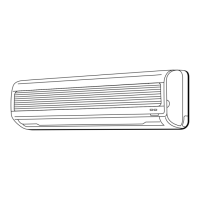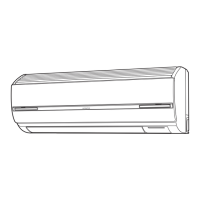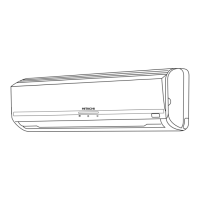– 71 –
(2) During ON period
● Collector current of Q1 is increased directly. In this period, base current is fixed by saturation characteristic
of transformer.
(3) Shifting from ON to OFF
● In this circuit, feed back (negative) is applied from 12V output. When voltage between both ends of C65
reaches the specified value, M51 is turned ON and current flows between pin 1 and 2 of P151, secondary
side is turned ON, current flows to base of Q2 via R9 and D4, Q2 is turned ON, and Q1 base current is
bypassed to turn Q1 OFF.
(4) During OFF period
● During Q1 ON period, energy as shown below is charged at primary winding of transformer and is
discharged to each secondary coil during OFF period:
Energy = LI
2
/2.
L : Primary inductance
I : Current when Q1 is OFF
Each coil C61 - C67 is charged according to the winding ratio.
ZD3 turns ON Q2 to bypass Q1 base current during ON period to fix value of voltage in the direction of
arrow.
For example, when applied voltage to Q1 is high, voltage in the direction of arrow will rise, and current
bypassing to Q2 is increased.
● Overcurrent flows at Q1 due to charged current at C61 - C67 when starting operation.
● When ZD3 reaches On voltage as a result of the voltage generated in the direction of arrow by Q1 collector
current, Q2 is turned ON and Q1 base current is bypassed.
● By limiting base current with Q2, Q1 is prevented from allowing too much collector current to flow.

